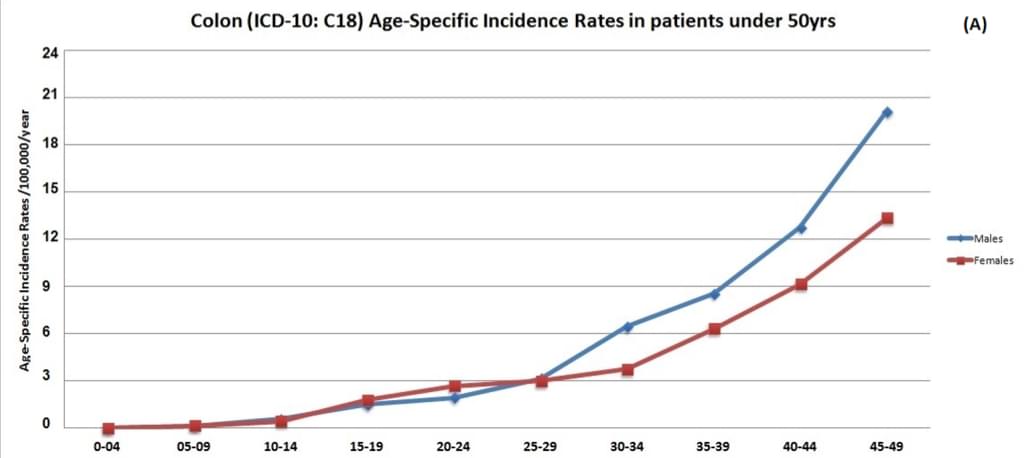Global Cancer Crisis For Young Adults
Filed in: Critical Illness |Income Protection |Medical Insurance
09 July 2025
Global Crisis: Young Adults, Cancer, and the PFAS Connection
Key Points Summary
• PFAS "Forever Chemicals" Connection: Per- and polyfluoroalkyl substances (PFAS) have achieved global contamination, with at least 45% of US tap water containing these chemicals. The International Agency for Research on Cancer classified PFOA as a confirmed human carcinogen in 2023, linking these persistent environmental contaminants to the rising cancer rates in younger demographics.
• Devastating Financial Impact: Young adults face catastrophic financial consequences from cancer diagnosis, including treatment costs of $50,000-$300,000, lost income during prime earning years, and potential lifetime earning losses exceeding $500,000. The burden extends beyond patients to affect children's education, family homes, and multigenerational economic stability.
• Urgent Need for Global Action: The crisis requires immediate international cooperation to reduce PFAS exposure through regulatory action, healthcare system strengthening, and comprehensive remediation programs. Individual financial preparedness must also evolve to address this emerging risk that traditional planning may not adequately cover.
A troubling pattern is emerging across the globe: cancer rates among young adults are rising at an unprecedented pace, challenging long-held assumptions about who gets cancer and when. From the United States to Europe, from Australia to Asia, medical professionals are witnessing a demographic shift that is reshaping cancer care worldwide.
According to the latest global cancer statistics, an estimated 20 million cancer cases were newly diagnosed in 2022, with projections reaching 35 million by 2050. Within this broader trend lies a particularly concerning development: the sharp increase in cancer diagnoses among adults aged 30-40, a demographic traditionally considered at lower risk.
As researchers worldwide scramble to understand the underlying causes, one environmental contaminant has emerged as a global suspect: per- and polyfluoroalkyl substances (PFAS), particularly perfluorooctanoic acid (PFOA). These "forever chemicals" have contaminated environments worldwide, creating a potential link between environmental exposure and rising cancer rates in young adults globally.
The Global Scale of Young Adult Cancer
The statistics paint a stark picture across multiple continents. In the United States, incidence rates increased by 1%-2% annually for cervical cancer (ages 30-44 years) and colorectal cancers (ages under 55 years) in young adults. Colorectal cancer was the fourth-leading cause of cancer death in both men and women younger than 50 years in the late-1990s but is now first in men.
This trend is not limited to North America. European cancer registries report similar patterns, with significant increases in cancer rates among younger demographics. Asian countries are documenting parallel trends, with traditional cancer age distributions shifting dramatically downward. The consistency of these patterns across diverse populations and healthcare systems suggests that environmental factors, rather than genetic or isolated lifestyle changes, may be driving this global phenomenon.
The World Health Organisation has recognised this emerging crisis, with survey results from 115 countries showing that a majority of countries do not adequately finance priority cancer and palliative care services. The inadequacy of healthcare systems to address this shifting demographic burden compounds the crisis.
The PFAS Connection: A Global Contamination Story
The story of PFAS contamination is inherently global. These chemicals, used in countless consumer products from non-stick cookware to waterproof clothing, have achieved worldwide distribution through manufacturing, use, and disposal. Found in everyday products such as nonstick frying pans, food packaging and waterproof clothing, the substances have been linked to serious health conditions including cancer and birth defects.
At least 45% of the nation's tap water in the United States is estimated to have one or more types of PFAS chemicals. This contamination pattern is replicated across continents, with some of the most studied PFAS, such as PFOA and PFOS, linked to serious health problems such as cancer, obesity, thyroid disease, high cholesterol, decreased fertility, liver damage and hormone disruption.
The global reach of PFAS contamination is dramatically illustrated by its presence in the most remote locations on Earth. Health impacts have been reported in polar bears, whales, kittiwakes and other Arctic species, though they live far from factories or urban centres. This ubiquity demonstrates that PFAS exposure represents a truly global environmental health challenge.
International Regulatory Responses
The global nature of PFAS contamination has prompted international regulatory action. In February 2024, the EPA proposed that nine PFAS be categorised as hazardous to human health - a designation only applied to substances that are toxic or cause cancer, genetic mutation, or embryo malformation. This classification follows the International Agency for Research on Cancer's 2023 decision to classify PFOA as a confirmed human carcinogen.
European authorities have been particularly aggressive in their response. The European Commission's current efforts to launch the largest proposal to restrict per- and polyfluoroalkyl substances (PFAS) in history reflect the growing concern about these chemicals' impact on public health. However, the global nature of PFAS contamination means that unilateral action by individual countries may have limited effectiveness.
The Economic Burden: A Global Financial Crisis
The financial impact of cancer diagnosis in young adults extends far beyond individual families to represent a global economic crisis. Unlike older patients who may have accumulated substantial savings and assets, young adults typically face cancer with crushing financial vulnerabilities: student loan debt averaging $30,000-$100,000 globally, mortgages representing 30-40% of their income, and minimal emergency savings.
The timing couldn't be worse. Adults aged 30-40 are in their prime earning years, often supporting young families while simultaneously caring for aging parents. A cancer diagnosis shatters this delicate economic balance. Treatment costs can range from $50,000 to $300,000 depending on cancer type and stage, creating immediate financial crisis even before considering lost income.
• The Hidden Costs: Beyond direct medical expenses, young adults face devastating indirect costs that compound their financial hardship. Extended sick leave often exhausts paid time off within months, forcing patients to choose between treatment and income. Fertility preservation, crucial for young adults, can cost $10,000-$20,000 and is rarely covered by insurance. Childcare costs skyrocket as patients require help with daily responsibilities, while travel to specialised treatment centres can drain savings.
• Career Derailment: The professional impact is particularly severe for young adults climbing career ladders. Missed promotions, reduced networking opportunities, and gaps in professional development can permanently alter earning trajectories. Many young professionals report being passed over for leadership roles or losing client relationships due to treatment schedules, creating lifetime earning losses that can exceed $500,000.
• The Insurance Trap: Young adults often discover they are catastrophically underinsured when diagnosed. Many opt for high-deductible health plans to save money, leaving them exposed to massive out-of-pocket costs. Life insurance coverage is typically minimal, and disability insurance--if it exists--rarely covers the full scope of earning potential loss.
In countries with universal healthcare systems, while treatment costs may be covered, the indirect financial devastation remains substantial. Lost productivity, reduced earning capacity, and the need for extended family support create economic ripple effects that extend throughout communities. In countries with less comprehensive healthcare coverage, the financial burden can be catastrophic, with young adults and their families facing bankruptcy, home foreclosure, and multigenerational economic devastation.
• The Generational Impact: The global trend toward later family formation and higher educational debt loads means that younger adults worldwide are particularly vulnerable to the financial shock of cancer diagnosis. Many are forced to liquidate retirement savings, compromising their financial security for decades. Children's education funds are depleted, and family homes are sold to cover medical expenses, creating a cycle of economic disruption that affects multiple generations.
Healthcare System Strain Worldwide
The increase in cancer rates among young adults is straining healthcare systems globally. Common challenges include:
• Diagnostic Delays: Healthcare systems designed around traditional cancer demographics may not be optimized for detecting cancer in younger patients. Symptoms may be dismissed or attributed to less serious conditions, leading to delayed diagnoses and more advanced disease at presentation
• Treatment Protocols: Many cancer treatment protocols were developed based on research conducted primarily in older patient populations. The unique needs of younger patients--including fertility preservation, career considerations, and family planning--require adapted approaches that many healthcare systems are still developing.
• Specialist Capacity: The increased demand for cancer care among younger demographics is creating bottlenecks in specialist availability worldwide.
The Research Response: International Collaboration
The global nature of the young adult cancer crisis has prompted unprecedented international research collaboration. Major cancer research institutions worldwide are sharing data, coordinating studies, and developing common protocols to understand the environmental factors driving this trend.
Key research initiatives include exposure assessment studies mapping PFAS levels across different populations, mechanistic research investigating how PFAS exposure may contribute to cancer development, and large-scale epidemiological studies tracking cancer incidence rates and environmental exposures across multiple countries.
Food Safety and Global Supply Chains
The global food supply chain has become a major pathway for PFAS exposure, creating international food safety challenges. Food packaging, agricultural contamination, and processing methods can introduce PFAS into food products that are then distributed worldwide. The FDA announced that food packaging containing PFAS is no longer sold in the United States, but similar measures in other countries have been slower to implement.
Climate Change Amplification
Climate change is amplifying the PFAS contamination crisis in several ways. Rising temperatures can increase the mobility of PFAS in the environment, potentially spreading contamination to previously unaffected areas. Extreme weather events can disrupt contaminated sites, releasing stored PFAS into the environment. Sea level rise threatens to mobilize PFAS from coastal industrial sites, potentially contaminating freshwater supplies.
A Call for Global Action
The convergence of rising cancer rates among young adults worldwide and global contamination with PFAS chemicals represents one of the most significant environmental health challenges of our time. The response must be coordinated, comprehensive, and urgent.
International cooperation is essential for addressing this global challenge. No single country can solve the PFAS contamination crisis alone, and the health impacts affect populations worldwide. The international community must work together to develop effective regulatory responses, share research and technology, and support vulnerable populations.
The stakes could not be higher. An entire generation of young adults worldwide faces increased cancer risk from environmental contamination that previous generations did not experience. The choices made by governments, international organizations, and the global community in the coming years will determine whether this crisis can be contained or whether it will continue to escalate.
The Path Forward
The global young adult cancer crisis requires immediate action to reduce PFAS exposure through regulations on food packaging, industrial emissions, and consumer products. Healthcare systems must be strengthened to better detect and treat cancer in young adults. Medium-term actions include comprehensive PFAS remediation programs and research investment. Long-term solutions require international frameworks for managing persistent environmental contaminants and developing safer alternatives.
The time for action is now. The health of young adults worldwide - and the economic security of their families - depends on swift, comprehensive, and coordinated international responses to this emerging crisis. The choices made today will echo through generations, determining whether the global community can successfully protect its younger citizens from the invisible threat of environmental contamination and its devastating consequences.
A Personal Financial Reckoning: Questions for Your Future
Given the stark reality of rising cancer rates among young adults and the potential for devastating financial consequences, every reader in the 30-40 age demographic--and those approaching it--must honestly confront their financial preparedness. The evidence presented in this article should prompt serious reflection on your current financial planning. Consider these critical questions:
1. Are you financially prepared for a $100,000-$300,000 medical crisis while simultaneously losing 6-18 months of income? Most young adults discover too late that their emergency savings, typically recommended at 3-6 months of expenses, are woefully inadequate for a cancer diagnosis. With treatment costs potentially exceeding annual salaries and income disruption lasting well beyond treatment completion, are you prepared for this financial reality?
2. Does your current insurance coverage truly protect your family's financial future, or are you gambling with high-deductible plans and minimal life insurance? Review your health insurance deductibles, out-of-pocket maximums, and coverage gaps. Calculate whether your current life insurance coverage would genuinely support your family's needs for decades, not just years. Consider whether disability insurance would replace your earning potential during treatment and recovery.
3. How would a cancer diagnosis impact your career trajectory and long-term earning potential, and have you accounted for this in your financial planning? Beyond immediate medical costs, cancer can derail promotions, client relationships, and professional development opportunities. Young professionals often underestimate how treatment disruptions can permanently alter their earning trajectories. Are you building sufficient financial cushions to weather potential career setbacks?
4. Are you inadvertently increasing your family's PFAS exposure through daily choices, and what preventive measures could you implement today? While you plan for potential financial impacts, consider practical steps to reduce risk: filtering drinking water, avoiding non-stick cookware, choosing PFAS-free food packaging, and supporting businesses that prioritise chemical safety. Prevention remains more cost-effective than treatment.
5. If you faced a cancer diagnosis tomorrow, would your financial planning protect not just your immediate needs but also your children's education, your retirement security, and your family's long-term economic stability? The multigenerational impact of young adult cancer extends far beyond the patient. Are you prepared to maintain your family's financial goals while managing a health crisis, or would everything collapse under the economic pressure?
These questions aren't meant to create anxiety but to prompt necessary action. The rising cancer rates among young adults worldwide represent a new risk that traditional financial planning may not adequately address. The time to reassess your financial preparedness is now, while you're healthy and have options to strengthen your economic resilience.
Note: This article synthesises available research and data current as of 2024-2025. The relationship between PFAS exposure and cancer development continues to be studied internationally, and readers should consult healthcare professionals and official health authorities for the most current medical guidance.


